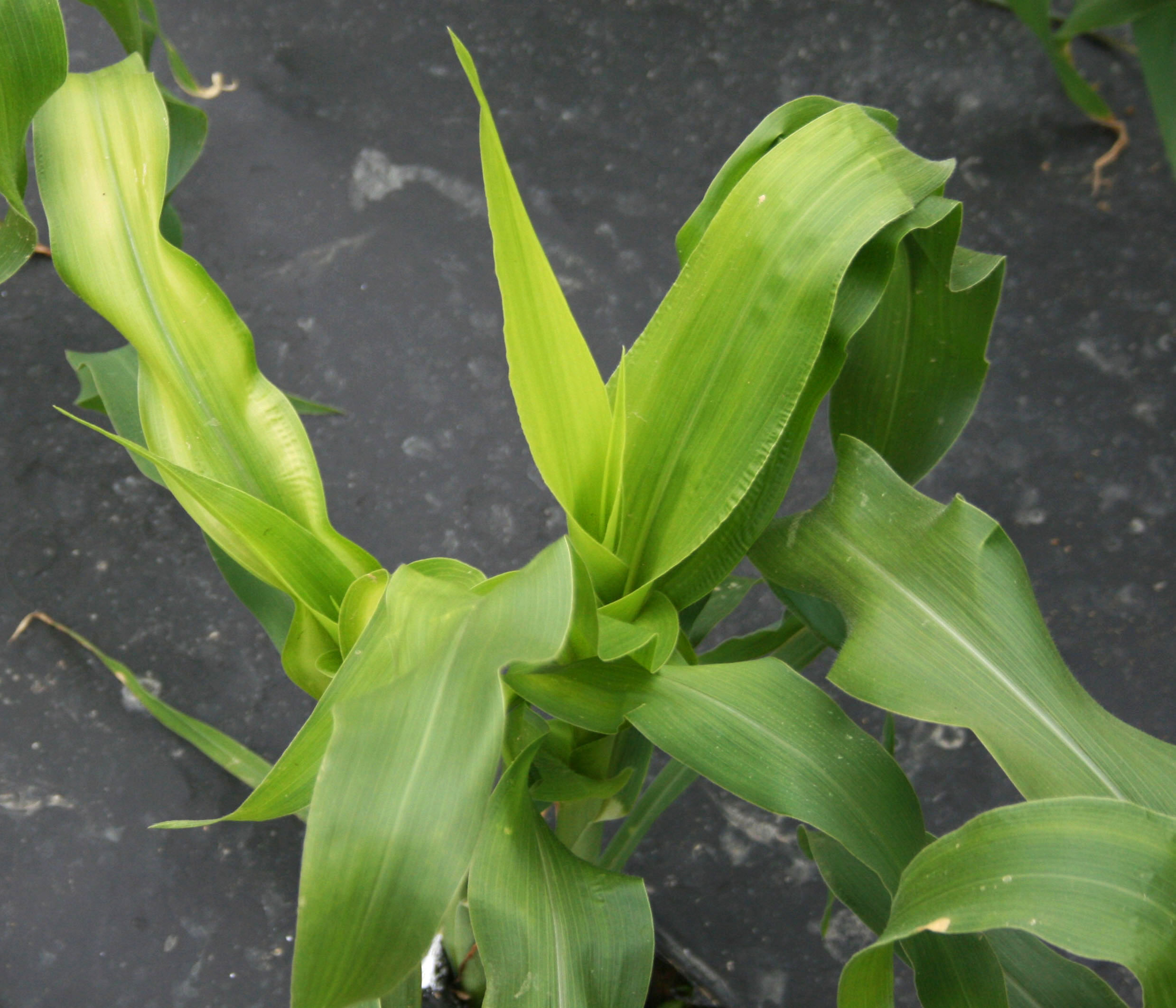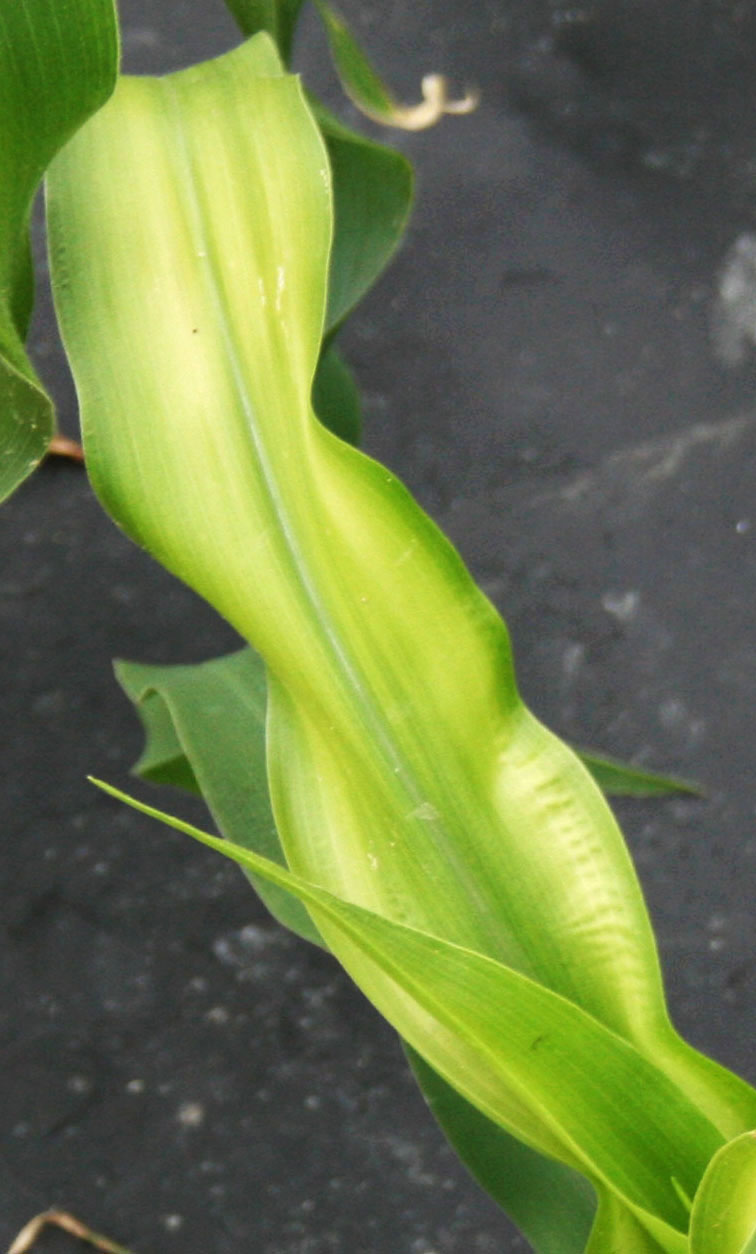Zinc Deficiency
Return to physiological, nutritional, and other disorders
Zinc deficiency is significant because zinc is an important micronutrient for sweet corn production. Zinc deficiencies will appear as whitish striping down the leaves of a corn plant. Typically the striping will appear on the outer parts of the leaves with the midvein remaining green. In addition, internode length (distance between leaves on a stalk) typically will be shortened in zinc-deficient plants. Although some soils are truly zinc deficient in Kentucky, zinc deficiency is most often observed in high pH soils (> 6.5) and in very early planting of sweet corn, when soils are coldest. Zinc will be less available in higher pH soils, and cool soil conditions often reduce zinc uptake by plants. When growing early or with plasticulture, sweet corn zinc deficiencies are often observed.

Whole plant symptoms of zinc deficiency
(Photo: UK Vegetable IPM Team, University of Kentucky)

Foliar symptoms of zinc deficiency
(Photo: UK Vegetable IPM Team, University of Kentucky)
Management:
- Although the University of Kentucky Soil Testing Laboratory tests for zinc in a routine soil test, the influence of environmental factors (temperature) make it difficult to predict a yield response from the addition of zinc for a particular growing season.
- If the soil is zinc deficient, zinc can be broadcast at up to 30 pounds per acre (90 pounds of zinc sulfate) or banded at 6 pounds per acre (17 pounds of zinc sulfate). Broadcast applications should last for several years. When sweet corn is transplanted into plastic, 4-6 pounds of zinc sulfate is often mixed into the setter water of water wheel transplanters.
